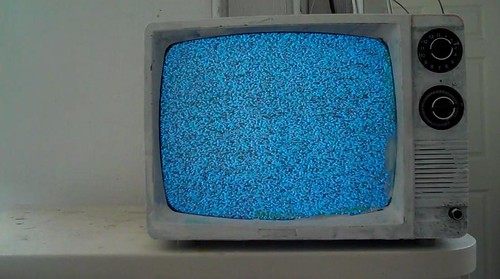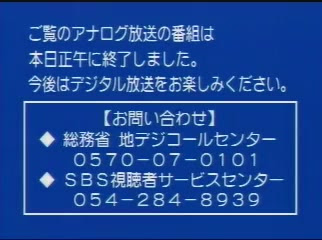It’s been almost 58 years of success as Japan now bids goodbye to analog television broadcasting. Marked the date of July 24, 2011 as their analog switchoff date, the Land of the Rising Sun succeeded a smooth transition from analog to digital television.
Tracing back the history of Japanese Television, they're one of the first countries in the world to do experimental television broadcasts in 1939. Due to World War II, Japan almost ceased those test trials and made regular public broadcast in 1950.
Nippon Hoso Kyokai, popular known as NHK, was Japan's very first television network, and also Asia's first TV broadcaster. To date, Japan now has six nationwide television broadcasters aside from NHK, namely Nihon TV, TBS, Fuji TV, TV Asahi and TV Tokyo.
On 1958, Japan constructed the well-known Tokyo Tower, a landmark of Japan that houses television transmitters in one major tower to lessen the congestion of buildings of many TV towers in the city.
Japan even housed the most advanced television broadcast facility in the world, at par with the Philippines on the 60's. Until 1979 which Japan introduces the Hi-Vision, the 1125-line High Definition Television broadcast over the analog signals. This marked also the start of the world's quest to develop high definition signals over television broadcast.
Decades after, Europe and the US earmarked the commencement of digital television in the world. While those two powerful continents dominate the royalties over DTV, Japan introduced their digital TV standard called the Integrated Services Digital Broadcast or ISDB-T in 1999, which brings high definition, standard definition and mobile/portable TV signals over one terrestrial TV transmission.
On December 1, 2003, with NHK's effort, Japan publicly introduced the digital terrestrial TV service in the country. Also, this denotes the country's analog switch-off date to July 24, 2011, approximately 7 years to transition from analog to digital TV broadcast.
It wasn't easy for a country like Japan to switchoff its analog signals over 7 years. In fact, it was the whole country’s effort to recognize Japan’s DTV switchover, aside from the broadcasters and public service. They even did the deer mascot, Chidejika, and made infomercials about the near digital TV migration.
2009 when broadcasters started to put an “Analog” sign on the upper-right corner of the analog TV signal. This helps to identify that receivers still receives analog TV signals, as well as to inform them that they should migrate into digital broadcast. Others may put hotline numbers and other information on the lower part of the analog broadcasts, until the time comes for Japan to say Goodbye Analog TV.
July 24, 2011, a historical mark for Japan to switch off all analog TV signals, except for the TV broadcasts in those prefectures that were damaged by the March 11 tsunami (which dated to switch off on March 2012). A day before, NHK even had its special program that showed the 58 years of television broadcast history of the country. Other TV networks include the final infomercials and infotainment programs to show migration to DTV. In the end, all analog TV networks put countdown for the switchoff and after “San-Ni-Ichi”, it was a blue and white information broadcast in just few hours, and suddenly go off-air.
For us, it was a smooth transition from analog to digital TV by simply putting the analog TV viewers on hold to a blue and white info putting some important messages and contact numbers. We remember some time when the US had shut down its analog TV service last June 12, 2009 with a live shutoff of the television transmitters of every network. As of this writing, Japan had never encountered any report on problem with people going digital, as well as receivers and the whole information about DTV are well disseminated to every Japanese household.
With that, Philippines might also follow Japan’s lead to digital broadcast via ISDB-T. Dated on December 31, 2015, almost five years away before the migration, it will be easy for all of us Filipinos to go digital if we do extra efforts to manage, inform and deliver data guided to digital TV broadcast. We at DTV Pilipinas, we are strengthening our outreach to every Filipino the knowledge and information about going digital. Better to know something, rather than nothing, so at the end, we also gonna have a problem-free migration to the future of Philippine television.










1 comment:
Now, I am excited on the future analog shutdown of the Philippines. I hope it succeeds just like in Japan. A well informed public will be the key to a successful transition to Digital TV. I hope the Philippines will follow what Japan did to inform the public about the transition.
Post a Comment